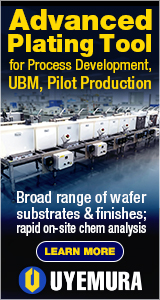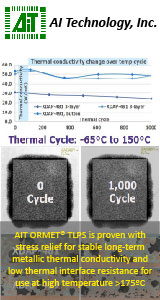|

|
|
| Ask the Experts | |||||||
|
|||||||
|
September 9, 2007 - Updated September 9, 2007 - Originally Posted AOI inspection using algorithm vs. image based systemsWhat is the difference between algorithm based AOI inspection systems and image based systems? What are the advantages or disadvantages of both types? As a small EMS company, which technology would you recommend? M. D. |
|||||||
| Expert Panel Responses | |||||||
|
1 & 2 – The main difference between algorithm and image based AOI is the information used by the system to qualify the defects. Image based AOI are working with an "historical" database which contains all the pictures of good and the defective components. This method is very sensitive to the way we store pictures and especially if you do misjudgement of defects. It is easy when you implement but very unstable in production environment while you are always storing images. Algorithm based AOI are using tools to analyze images and find defects. This is not related to the current image but refers to logical characteristics of the image (like the edge of the components). Some advanced AOI are using algorithm such as "pattern match" to identify the geometry of the component itself. These AOI are much more stable during the production as they refer to properties of the component and not to a few "stored" images which depend on component and PCB variations. 3 – As a small EMS company, even if the short term benefits of image based AOI can be attractive (easy to implement), I would recommend to plan the use of AOI for mid or long term advantages (stability). You will gain when the AOI will be fully implemented with a unique stable library of algorithms for all the variety of your products.
Products & Applications Mgr Vi Technology Jean-Marc Peallat is Products and Applications Manager for Vi Technology. He started the AOI branch of the company, ten years ago, and led successively support and application teams, notably in Americas.
Algorithm based systems utilize contrast location mechanisms that look for variations in light and dark grays scales to identify the component and the surrounding area. From these location techniques all other inspections are applied such as presence/absence, solder joint, polarity, bridge, and package identification. Image based systems learn the variables of a group of images and apply those learned variables against all future component inspections. How good either technique is really depends upon the AOI vendor but the general assumptions and feedback in the field is that algorithm based systems provide higher levels of inspection coverage, lower false fails, but can take a little longer for initial program development. The image based systems are often perceived as easier to get programs up and running but as stated may not provide the best inspection coverage. As a small EMS company it depends on what you want to achieve and where you see yourself in a few years. If you are only concerned in quick presence/absence analysis an image based system is probably sufficient for your needs. But if you expect to grow and really need good defect coverage especially around solder joint analysis and location an algorithm based system is probably the best solution. It should also be noted that most algorithm based systems have some level or learning capability that allows future programs to be developed much faster after the first few initial programs.
Americas Marketing Development Manager Agilent Technologies Ms. Johnson's entry into the electronic packaging arena was as a Package Development Engineer. Stacy recently joined the Americas Field Marketing Organization as a Marketing Development Manager for the Americas where she continues to work on AOI, AXI and also In-Circuit Test.
NOTE: Ms. Johnson is no longer working at Agilent Technologies. This is an implied "either-or" that has arguably now been bridged by a few manufacturers…but remains from the past a distinction to many. Image based perceived as Low End, and Algorithm based as High End. Image based systems The old term "image based system"comes from the fact that those machines compare images of entire components. If the source image deviates too much from the target, it flags a defect. This deviation tolerance is specified as a brightness percentage. These systems are also known as correlation based systems. Algorithm based systems Also known as Threshold or Vector systems. these machines distinguish Pass and Fail byapproval against targetpixel data, tolerances and algorithms. There are two different ways toset the target data:
Director Protean Marketing Now a director at Protean Marketing, Mr. Heimsch has worked in the electronics industry 25+ years in a wide variety of international sales, marketing and operations roles. Rich spearheads Protean's international business development, specializing in Brand Management and Strategic Communications.
|
|||||||
| Submit A Comment | |||||||
|
Comments are reviewed prior to posting. You must include your full name to have your comments posted. We will not post your email address. |
|
Free Newsletter Subscription
Circuitnet is built for professionals who bear the responsibility of looking ahead, imagining the future, and preparing for it. Insert Your Email Address |
|

|





